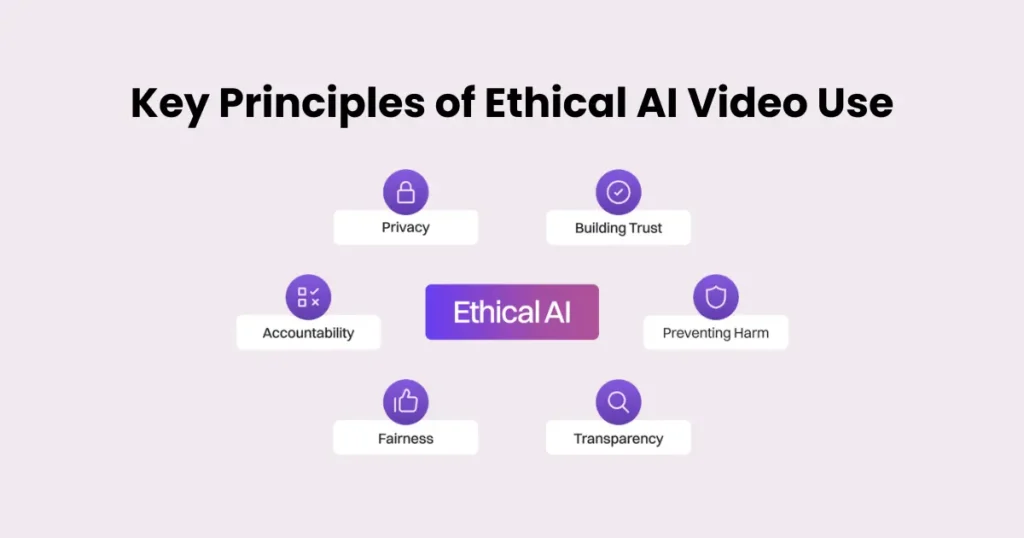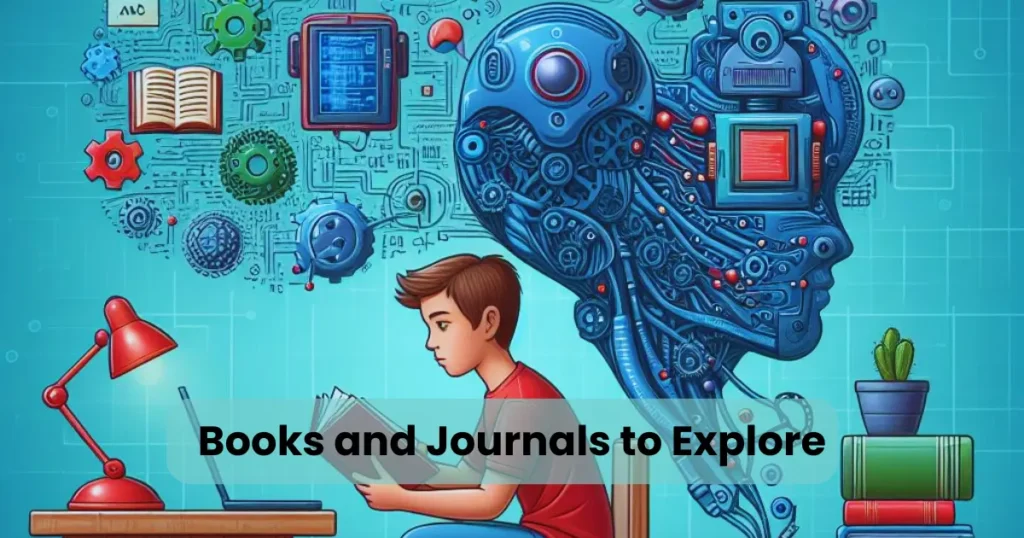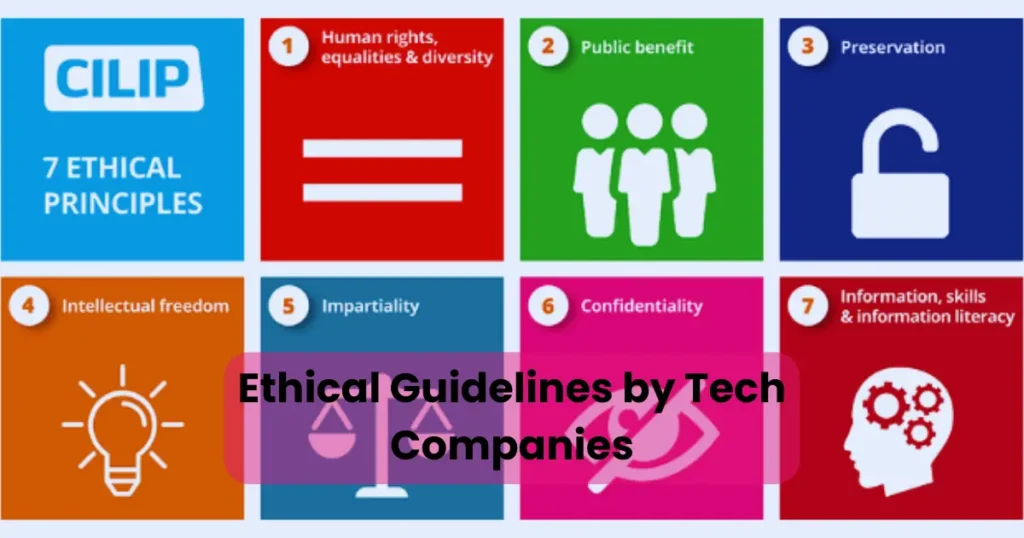
AI Content Creation
Learning Resources for Ethical AI Video Use

Contents
As artificial intelligence continues to revolutionize the way digital content is created, learning resources for ethical AI video use have never been more important. From deepfakes to algorithm-driven video editing, AI tools are becoming widely accessible but with great power comes great responsibility. Creators, educators, and developers must be aware of the ethical boundaries that guide the use of these technologies.
Moreover, the rise of misinformation and manipulation in video content has made it crucial for users to be properly educated. Fortunately, numerous platforms and materials have been developed to address this growing need. Whether you’re a beginner curious about ethical frameworks or a professional seeking certification, the availability of structured, reputable resources can support your journey toward responsible AI video use.
Why Ethical AI in Video Matters
The impact of AI-generated video content on society is profound, and as this technology becomes more widespread, so do the ethical concerns surrounding its use. Without ethical guidelines in place, AI tools can be exploited to manipulate audiences, spread disinformation, or even infringe upon personal rights. Therefore, ethical considerations are not optional—they are fundamental.
One major concern is deepfake technology, which allows highly realistic but fake videos to be produced. These can be used to impersonate public figures or fabricate events, leading to serious consequences for trust, democracy, and social cohesion. Ethical AI use helps mitigate these risks by encouraging transparency and accountability.
Moreover, issues related to bias in algorithms, privacy violations, and informed consent arise frequently when AI is used in video creation. Ethical practices ensure that AI video tools are developed and applied fairly, without discrimination or harm to individuals or communities.
Additionally, by promoting responsible practices, creators and developers can build credibility and trust with their audiences. In fact, learning how to implement these principles is just as important as mastering the technical aspects of AI. That’s why exploring learning resources for ethical AI video use should be considered a foundational step in anyone’s educational journey through this space.
Key Principles of Ethical AI Video Use
To ensure that AI is used responsibly in video production, several key ethical principles must be followed. These guiding values serve as the foundation for fair, respectful, and transparent AI video practices. As you explore various learning resources for ethical AI video use, these principles will consistently appear as essential standards.

Transparency
Users should be informed when a video has been created or altered using AI. Whether it’s synthetic speech, face swapping, or animation, transparency builds trust and helps prevent misinformation. For example, some platforms now label AI-generated content clearly to ensure viewer awareness.
Accountability
Although AI automates many processes, human creators and developers must remain accountable for the outputs. Ethical frameworks emphasize the importance of taking responsibility for any content distributed, regardless of how much was machine-generated.
Privacy and Consent
AI video tools often require data sometimes personal, biometric, or behavioral. Therefore, informed consent must be obtained before using anyone’s likeness or voice. Ethical guidelines also call for minimizing data collection and protecting user privacy.
Fairness and Non-Discrimination
Algorithms can unintentionally reflect biases found in training data. When learning how to responsibly develop or use these tools, one must understand how to audit and mitigate bias. Fairness ensures that AI does not reinforce stereotypes or marginalize certain groups.
Security
AI-generated videos can be misused. Ethical principles stress the importance of securing AI systems from tampering, unauthorized use, or malicious alterations that could damage reputations or deceive viewers.
These core principles are not only recommended they are embedded in many of the learning resources for ethical AI video use you’ll encounter in reputable courses and certification programs.
Best Learning Platforms
To fully understand and implement ethical practices in AI-driven video creation, selecting the right platform is crucial. The following platforms offer structured and high-quality learning resources for ethical AI video use, catering to beginners and professionals alike. They cover theoretical foundations, real-world applications, and evolving legal considerations.

Coursera
Coursera offers courses from top universities like Stanford and the University of Helsinki that delve into AI ethics, media manipulation, and responsible AI development. These courses are often led by academic and industry experts, ensuring you gain a research-based and up-to-date understanding of ethical issues.
- Recommended Course: “AI For Everyone” by Andrew Ng includes ethical AI principles.
- Why It Stands Out: Certificate options and structured learning paths.
edX
Developed in partnership with institutions such as MIT and Harvard, edX features professional certificate programs on AI ethics, digital privacy, and algorithmic accountability. These are ideal for those wanting deeper academic insight into the subject.
- Recommended Course: “Ethics and the Law in Data and Analytics” by Microsoft.
- Why It Stands Out: University-backed content with in-depth analysis.
Udemy
Known for its accessible and affordable courses, Udemy offers quick-start programs that introduce learners to AI in media with practical examples. Although it’s less academic, it’s a good entry point for creators and editors.
- Recommended Course: “AI Ethics: The Complete Guide.”
- Why It Stands Out: Lifetime access, often updated content.
FutureLearn
FutureLearn partners with leading UK institutions and NGOs to offer free and premium courses focusing on digital responsibility. This is especially valuable for those wanting a European or global policy perspective.
- Recommended Course: “Introduction to Responsible AI.”
- Why It Stands Out: Focuses on public interest and ethical impact.
Each of these platforms provides structured learning resources for ethical AI video use, helping users build both the technical skills and moral framework necessary for responsible video production.
Free Online Resources
For those seeking cost-effective education, several high-quality free platforms offer open access to learning resources for ethical AI video use. These resources provide a valuable starting point for anyone interested in understanding ethical concerns without a financial commitment. Even though they’re free, the information provided is rich, reliable, and updated regularly.

YouTube Educational Channels
Numerous YouTube creators and academic institutions produce in-depth videos on AI ethics and video manipulation. Channels like CrashCourse, Two Minute Papers, and Oxford AI break down complex ethical dilemmas in easy-to-understand formats.
- Why It’s Useful: Great for visual learners; often includes case studies and real-world applications.
Non-Profit Initiatives
Organizations such as AI Now Institute, Data & Society, and Partnership on AI provide comprehensive research papers, articles, and webinars. Their focus is to ensure AI development aligns with public interest, especially in media and communications.
- Why It’s Useful: Credible, research-backed, and policy-oriented materials.
University Open Courses
Many universities now publish free course materials through their websites or on platforms like OpenCourseWare (OCW). MIT, Stanford, and UC Berkeley offer lecture series, reading lists, and assignments related to AI ethics, often touching on media-related applications.
- Why It’s Useful: Academic depth without the need for enrollment or fees.
MOOCs with Audit Options
Courses on platforms like Coursera and edX can be audited for free, giving access to all videos and materials without a certificate. This is a fantastic way to tap into learning resources for ethical AI video use on a budget.
- Why It’s Useful: Get structured learning without financial pressure.
Through these free resources, learners can build a solid foundation in ethical AI without barriers. And while certification can be added later, this approach allows for immediate access and exploration.
Books and Journals to Explore
For deeper insight and long-term understanding, books and academic journals remain essential learning resources for ethical AI video use. These sources offer nuanced discussions, real-world case studies, and historical context that short-form content often lacks. Whether you’re conducting research or simply expanding your knowledge, the following resources are highly recommended.

Books
1. “Weapons of Math Destruction” by Cathy O’Neil
This bestseller explores how algorithms, when unchecked, can reinforce inequality and cause real harm. Although not video-specific, it lays a strong ethical foundation for all AI applications.
2. “Artificial Unintelligence” by Meredith Broussard
Broussard discusses the limitations and dangers of AI, especially when applied to journalism, media, and video technologies. A must-read for content creators.
3. “The Ethical Algorithm” by Michael Kearns and Aaron Roth
This book focuses on designing AI systems that are fair, accountable, and transparent—three pillars of ethical video creation.
4. “Deepfakes: The Coming Infocalypse” by Nina Schick
An accessible yet urgent look at the dangers of AI-generated video content, disinformation, and its global implications.
Academic Journals
- Journal of AI Ethics
Covers a wide range of ethical concerns including AI in visual content, surveillance, and data ethics. - AI & Society
Publishes interdisciplinary research on how AI technologies affect societal norms, media, and governance. - Ethics and Information Technology
Offers deep dives into the intersection of digital ethics, artificial intelligence, and public policy. - Communications of the ACM
Frequently features studies and commentary on ethical AI in media, including video and audio technologies.
These books and journals offer some of the most comprehensive learning resources for ethical AI video use, combining research, critique, and actionable advice.
Ethical Guidelines by Tech Companies
In response to growing concerns around misuse, many leading tech companies have released their own frameworks and policies. These serve as valuable learning resources for ethical AI video use, offering insight into how the industry is responding to ethical challenges with practical safeguards and development standards.

Google AI Principles
Google was among the first major companies to publish a formal AI ethics statement. These principles include commitments to:
- Avoid creating or reinforcing unfair bias
- Be accountable to people
- Ensure safety and privacy
- Uphold high standards of scientific excellence
Although general, these guidelines also apply to video tools integrated with Google’s AI systems like DeepMind and YouTube AI moderation.
Microsoft Responsible AI Standard
Microsoft has created an in-depth Responsible AI Standard, which includes:
- Fairness and inclusiveness
- Reliability and safety
- Transparency and accountability
Additionally, Microsoft offers public toolkits such as Fairlearn and InterpretML, which help developers evaluate their models important when producing ethical AI-generated video.
Meta (Facebook) AI Ethics
Meta’s guidelines focus heavily on deepfake detection and transparency in content labeling. The company is investing in tools to verify synthetic videos and encourages research through its Deepfake Detection Challenge dataset.
These policies are not only enforced internally but also shared publicly, making them part of the broader pool of learning resources for ethical AI video use.
IBM Principles for Trust and Transparency
IBM emphasizes explainability and responsible stewardship of AI systems. Their documentation includes:
- Risk assessments
- Ethical impact reviews
- Clear policies on AI use in visual and biometric contexts
IBM also partners with academia to publish open-access ethical resources.
By studying these corporate guidelines, learners and professionals can better understand how theory translates into practice. Moreover, as these companies often influence global standards, their frameworks are essential to any ethical learning path.
Certification Programs
For those aiming to validate their knowledge or enhance their professional credibility, certification programs offer structured and in-depth learning resources for ethical AI video use. These programs combine theoretical instruction with real-world case studies, helping learners meet the growing demand for responsible AI expertise in creative industries.

1. AI Ethics Certification by The Alan Turing Institute
This UK-based program focuses on applying ethical principles in practical AI applications. While not video-specific, it lays a strong foundation in transparency, accountability, and social responsibility all of which are vital in AI-powered video tools.
- Features: Online modules, research-led curriculum, recognized in academia and industry.
- Ideal For: Researchers, developers, and policy professionals.
2. Coursera – “AI Ethics and Society” Specialization
Offered by the University of Edinburgh, this specialization teaches learners how ethical issues intersect with real-world AI systems, including media, surveillance, and visual content.
- Features: Flexible schedule, peer-reviewed assignments, completion certificate.
- Ideal For: Media professionals and digital content creators.
3. CertNexus Certified Ethical Emerging Technologist (CEET)
CEET focuses on emerging technologies, including AI, and emphasizes ethical design and governance. The certification is highly relevant to those working with AI in production environments like video editing and synthetic media creation.
- Features: Globally recognized, vendor-neutral, competency-based testing.
- Ideal For: IT professionals, tech leads, and creators integrating AI into workflows.
4. edX – “Ethics in AI and Big Data” Professional Certificate
Created by the Linux Foundation, this program explores data governance, AI ethics, and human rights implications of machine learning systems—including video content analysis.
- Features: Professional-grade, self-paced, offered with optional accreditation.
- Ideal For: Legal experts, project managers, and compliance officers.
Each of these certification programs delivers comprehensive learning resources for ethical AI video use, while also offering recognized credentials that can boost your credibility in academic, tech, or creative industries.
Community Forums and Groups
To stay updated and engage in real-time discussions, joining active communities can be one of the most dynamic learning resources for ethical AI video use. These forums and groups allow individuals to share experiences, ask questions, collaborate on ethical challenges, and access evolving insights into AI applications in video production and analysis.

Reddit Communities
Subreddits like r/MachineLearning, r/Artificial, and r/Deepfakes often discuss ethics in AI-generated content. While some posts raise concerns, others focus on detection methods and policy updates.
- Why It’s Useful: Real-time updates, diverse perspectives, and informal peer advice.
LinkedIn Groups
Professional groups such as AI Ethics & Governance, Responsible AI, and Ethical AI Community host webinars, article shares, and job postings. Industry leaders often participate, offering valuable insights and networking opportunities.
- Why It’s Useful: Thought leadership, live discussions, and cross-sector exchange.
Slack and Discord Channels
Communities like AI Alignment Slack or The Gradient Discord provide direct access to researchers, developers, and digital media professionals. Channels often include topics specific to media ethics, synthetic content, and policy updates.
- Why It’s Useful: Interactive discussions, mentorship opportunities, and event invitations.
Professional Organizations
Associations such as the IEEE Global Initiative on Ethics of Autonomous and Intelligent Systems and The ACM Future of Computing Academy offer mailing lists, open forums, and workshops related to ethical AI use in creative contexts.
These communities complement traditional courses by offering informal yet rich learning resources for ethical AI video use, helping learners engage with real-world applications and stay current with tech trends.
Tips for Responsible AI Video Creation
While learning about ethical AI practices is crucial, it’s equally important to apply this knowledge in real-world video creation. Below are some practical tips to ensure that AI video content is produced responsibly, ethically, and with consideration for societal impact.

1. Prioritize Transparency
When using AI in video creation, it’s essential to maintain transparency with your audience. Clearly disclose when AI tools have been used, especially in synthetic media such as deepfakes or altered videos. Transparency fosters trust and ensures viewers are aware of the technology behind the content they are consuming.
- Tip: Add a disclaimer or credits section highlighting AI usage in the video’s creation.
2. Minimize Bias
AI algorithms can inadvertently reinforce biases present in the data they are trained on. As a video creator, it’s important to actively evaluate and mitigate biases in AI-generated content, especially when it involves representations of gender, race, or cultural contexts.
- Tip: Regularly audit and adjust AI tools to ensure that they promote fair and inclusive content.
3. Ensure Privacy and Data Protection
Incorporating AI in video creation often involves handling personal data (e.g., for facial recognition or speech synthesis). Always prioritize user privacy and adhere to regulations like GDPR to protect sensitive information. Avoid using AI tools that collect data without consent or exploit user data for malicious purposes.
- Tip: Use anonymization techniques and seek consent from participants in AI-driven video content creation.
4. Prevent Misuse of Deepfakes
While deepfakes and AI-generated videos have legitimate uses in entertainment and education, they can also be misused for misinformation. Always ensure that AI tools are used for constructive purposes and not for malicious intent, such as creating deceptive or harmful videos.
- Tip: Implement detection systems to identify and label AI-manipulated content, especially in critical applications like journalism.
5. Stay Updated with Ethical Guidelines
AI technology is evolving rapidly, and so are its ethical implications. Continuously educate yourself on new guidelines and best practices, and adapt your video creation processes accordingly. Following industry-leading ethical frameworks will help you navigate new challenges as they arise.
- Tip: Regularly review ethical AI guidelines from organizations like Google, Microsoft, and other tech companies mentioned in this article.
By following these tips, creators can ensure that their AI video content adheres to high ethical standards, maintaining both creative integrity and social responsibility.
Conclusion
As AI continues to revolutionize video creation, it’s crucial for creators, developers, and professionals in the field to stay informed about the ethical challenges and responsibilities that come with this technology. The learning resources for ethical AI video use highlighted throughout this article provide a solid foundation for understanding how AI can be used responsibly in video production, from detecting biases to preventing misuse.
By utilizing these resources whether through online courses, books, certification programs, or community engagement you can ensure that your work adheres to the highest ethical standards. Ethical AI use is not only about following rules but about fostering transparency, accountability, and trust in every project you undertake.
Moving forward, it is essential to:
- Stay proactive in learning and applying ethical principles.
- Collaborate with others in the AI and video creation communities to share best practices.
- Continuously reassess the impact of your AI-driven content on society and audiences.
With ethical guidelines in place and a commitment to responsible practices, we can shape an AI-powered future that benefits everyone. Keep learning, stay engaged, and lead by example as you create AI-driven video content that is both innovative and ethically sound.


AI Tools for Cinematic Branding: Revolutionizing Visual Storytelling
Updated on July 12, 2025
Read More